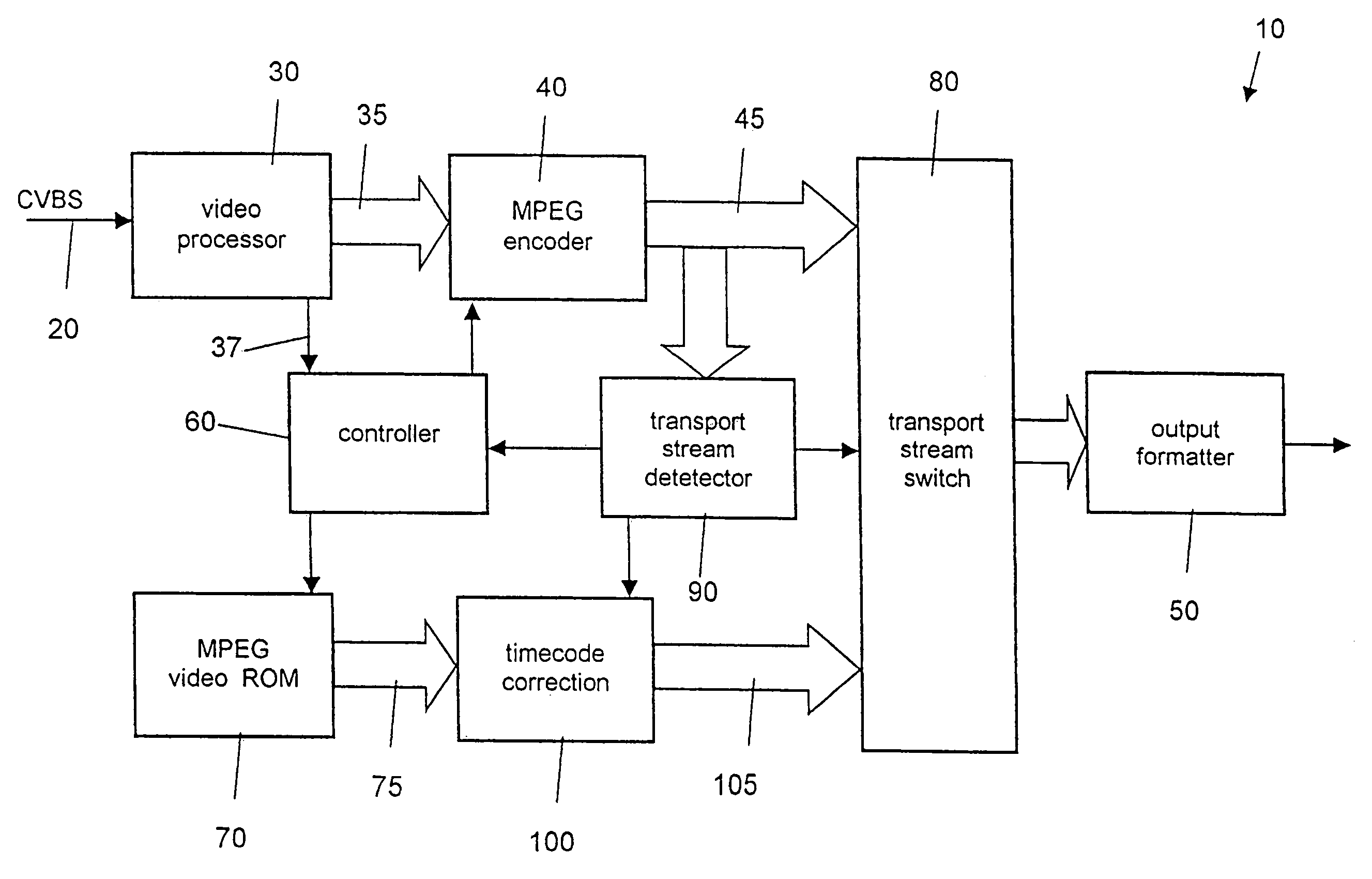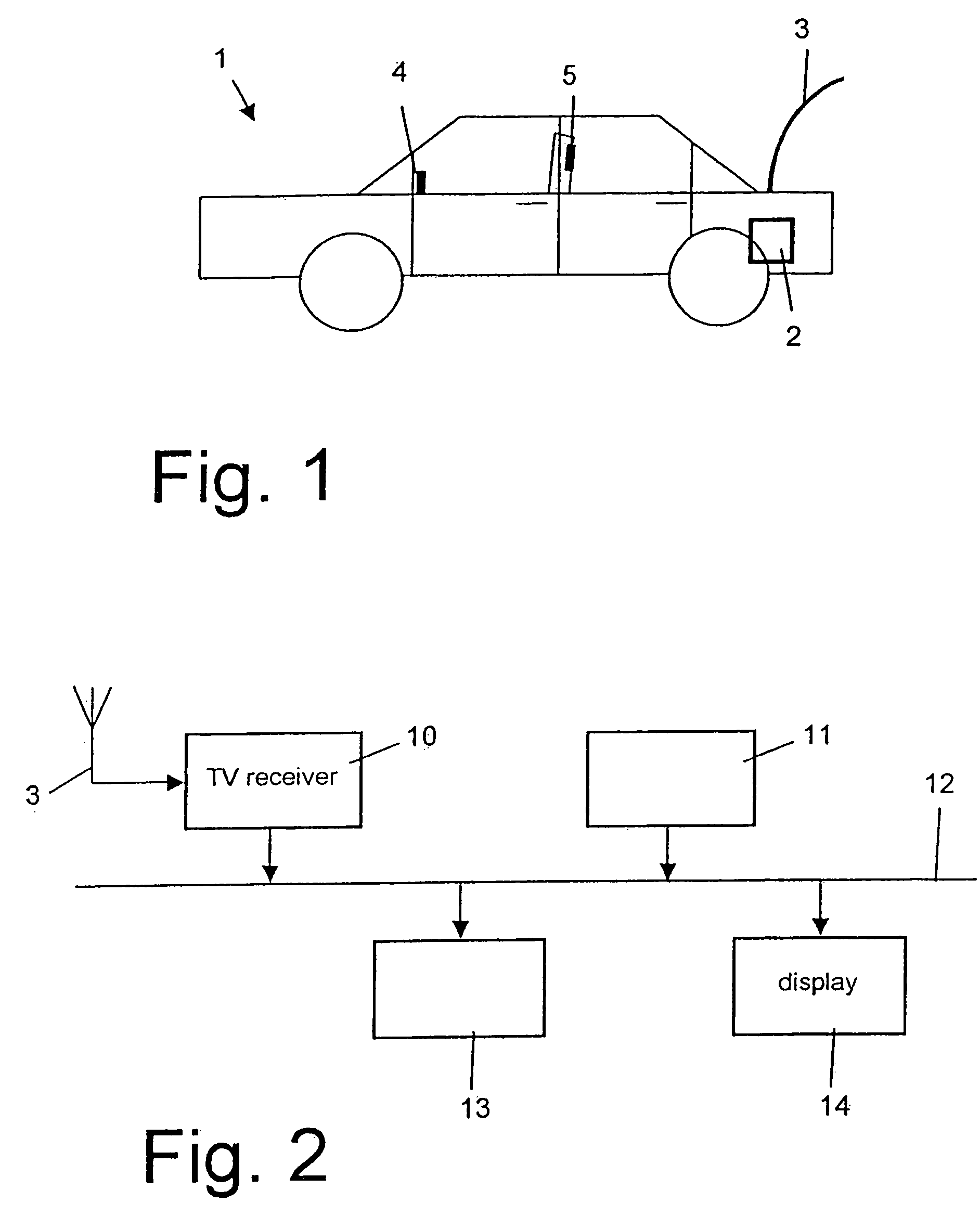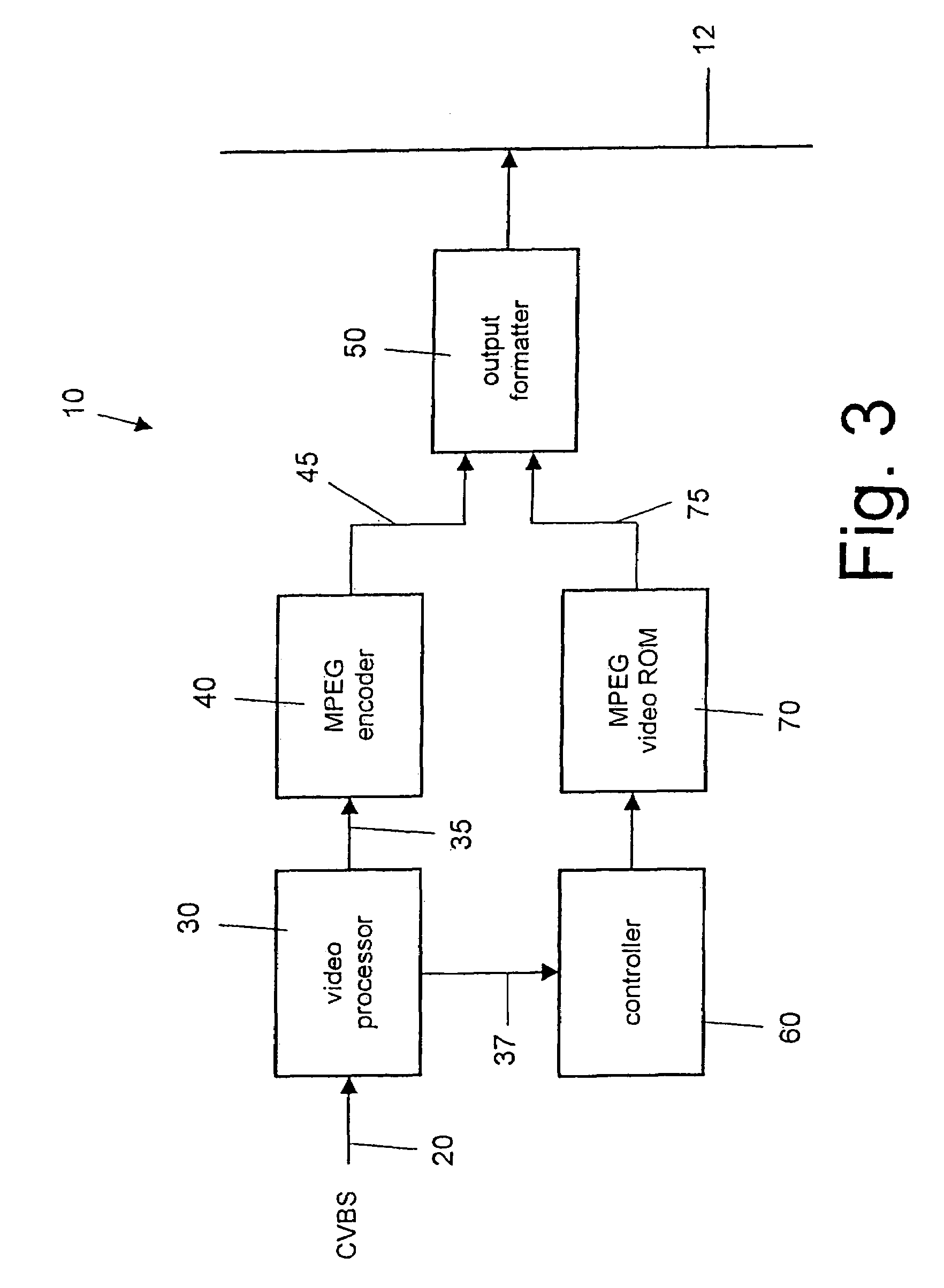Mobile television receiver
a television receiver and mobile technology, applied in the field of system and method of reproducing a television signal, can solve the problems of encoder stopping the encoding operation, distortion of the reproduced audio and video signal, distortion of the reproduced image on the display device and also in the audio signal, etc., and achieve the effect of minimizing the computation effort required upon detection of distortion
- Summary
- Abstract
- Description
- Claims
- Application Information
AI Technical Summary
Benefits of technology
Problems solved by technology
Method used
Image
Examples
Embodiment Construction
[0043]The invention is intended for use in mobile vehicles. As shown in FIG. 1, the different components of a mobile entertainment system, particularly of a mobile television system, may be distributed over distant locations within the vehicle. While the processing hardware may be mounted at the rear side of the vehicle, in proximity to an antenna 3, display devices 4 and 5 for the reproduction of video data may be mounted on the vehicle's dashboard, and / or behind the front seats for rear-seat passengers. The video signals to be displayed may be transmitted from the television receiver to the plurality of display devices 4 and 5 at locations distant therefrom. This situation particularly arises in coaches and trains where a single processing hardware provides a video signal to a plurality of display devices at the individual passenger seats. The video signal transmission, together with associated audio, is accomplished by employing a communication link coupling the display devices 4...
PUM
 Login to View More
Login to View More Abstract
Description
Claims
Application Information
 Login to View More
Login to View More - R&D
- Intellectual Property
- Life Sciences
- Materials
- Tech Scout
- Unparalleled Data Quality
- Higher Quality Content
- 60% Fewer Hallucinations
Browse by: Latest US Patents, China's latest patents, Technical Efficacy Thesaurus, Application Domain, Technology Topic, Popular Technical Reports.
© 2025 PatSnap. All rights reserved.Legal|Privacy policy|Modern Slavery Act Transparency Statement|Sitemap|About US| Contact US: help@patsnap.com



